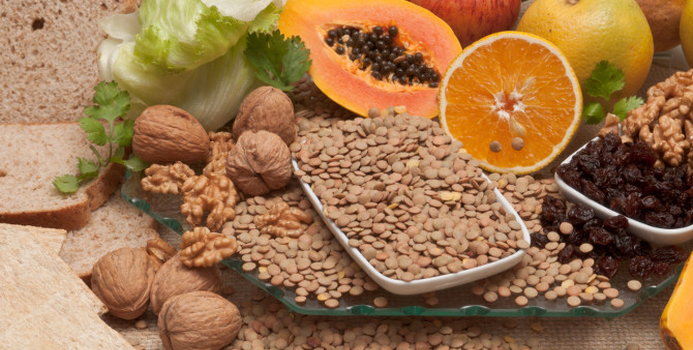Eating a diet that is high in fiber has many health benefits; following a few simple tips can help you increase your daily fiber intake. Getting enough fiber in your diet can help reduce constipation and normalize bowel movements, reduce cholesterol, aid in weight loss, and help control blood sugar levels. High fiber foods also help you feel fuller longer. To reap the healthy benefits of fiber, try to eat at least 20-35 g of fiber per day. Below are some easy ways to increase the fiber in your diet.
1. Switch to Whole Wheat or Whole Grain Breads
If you're currently eating white bread, it's easy to switch to a whole wheat or whole grain variety. Make sure to read the ingredient list on the food label to make sure it includes whole wheat or whole grain. When a grain is processed and refined, as with white bread, much of the fiber is lost when parts of the grain are removed. Even if you see wheat flour as an ingredient, it's not as high in fiber as whole wheat flour. Whole wheat and whole grain bread are also higher in protein and tend to keep you feeling fuller longer. You can also try switching to whole wheat pasta and brown rice.
2. Eat at Least 5 Servings of Fruits and Vegetables Each Day
Most people are lacking in the fruit and veggie department. Getting at least five servings per day will help increase your fiber intake and help you maintain a healthy weight. The peel of fruits and veggies is especially high in fiber. A serving of fruit consists of 1 small apple, or banana, ¼ cup of dried fruit, 1 cup of melon or berries, ½ cup juice or about 17 grapes. A serving of vegetables includes ½ cup of cooked veggies, ½ cup of vegetable juice, or 1 cup of raw veggies.
3. Switch to a High Fiber Cereal
Many cereals claim to be high in fiber, but check the food label to know for sure. It will tell you how many grams of fiber are in a serving of your favorite cereal. Higher fiber cereals include Fiber One, Raisin Bran, Grape Nuts, Shredded Wheat, and All-Bran. Oatmeal is another high-fiber choice.
4. Eat Peas, Beans, and Legumes
Including peas, beans, and legumes in your diet will increase fiber, protein, and iron in your diet. Examples include lentils, kidney beans, and garbanzo beans. Foods that contain beans and legumes include chili (with beans), split pea soup, bean burritos, refried beans, and lentil soup.
5. Eat High-Fiber Snacks
Instead of grabbing for a bag of chips, eat some popcorn, fruit, whole grain crackers, or nuts. These snack foods all contain fiber and other nutrients that can benefit your health. Nuts and seeds, although high in fat, contain unsaturated fats that can help lower your cholesterol and risk of heart disease. Popcorn is a high-fiber snack and can be healthy if you don't add lots of extra butter. Check your food labels to help you pick the most nutrient-dense, high-fiber snack foods.
The nutritional tools found on FitDay.com can be used to help you track your daily fiber intake.



